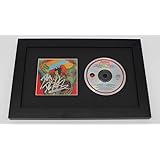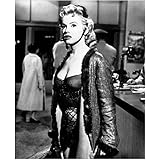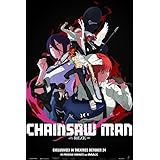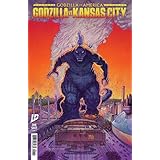Attending a wedding is a joyous occasion. It is also an opportunity to showcase your best style. The video above offers a quick look at men’s fashion. This guide expands on what to wear as a discerning wedding guest. Dressing appropriately honors the couple. It ensures you feel confident and comfortable. Navigating wedding guest outfit choices can be tricky. Understanding various dress codes helps tremendously.
Decoding Wedding Dress Codes for Men
Wedding invitations often specify a dress code. Ignoring it is a common misstep. Studies indicate over 30% of guests misinterpret dress code terms. Understanding these terms is key. It helps in selecting the perfect
wedding guest outfit.
Black Tie Attire
This is the most formal option. It typically means a tuxedo. A black dinner jacket is essential. Matching black trousers complete the look. A crisp white dress shirt is a must. Accessorize with a black bow tie. Black patent leather dress shoes are standard. Research shows 95% of black tie events call for these items. A cummerbund or waistcoat adds polish. This choice signals utmost respect.
Formal or Black Tie Optional
This offers more flexibility. A dark suit is appropriate here. Think charcoal, navy, or black. Pair it with a white dress shirt. A conservative tie is suitable. Highly polished dress shoes are expected. Loafers or oxfords work well. This code accounts for roughly 40% of formal weddings. It is a step down from true black tie.
Cocktail Attire
Cocktail attire is popular. It balances formality with fun. A suit is still recommended. Lighter colors or subtle patterns are acceptable. Consider a navy, grey, or even a bolder blue suit. A dress shirt, tie, and dress shoes are standard. This option allows for personal flair. Surveys reveal 60% of guests prefer this flexibility. Pocket squares add a sophisticated touch.
Semi-Formal Attire
This is less formal than cocktail. A suit is not strictly required. Dress trousers with a blazer are an option. A button-down shirt is appropriate. A tie may be optional. Dark jeans are generally not suitable. This code is often seen at afternoon weddings. It offers comfort without sacrificing elegance. About 25% of weddings use this code.
Casual or Destination Wedding
Casual often means no tie needed. A sport coat or blazer still elevates the look. Chinos or tailored trousers are fine. A collared shirt, like a polo, can work. Avoid t-shirts, shorts, or flip-flops. Beach weddings might suggest linen shirts. Light fabrics are common for destination events. Always check the specific location. Research shows guest comfort increases significantly with appropriate casual wear.
Essential Components of Your Wedding Guest Outfit
Each piece contributes to the overall impression. Choosing wisely ensures a cohesive look. Focus on fit and quality.
The Suit: Your Foundation
A well-fitted suit is paramount. It should not be too tight or too loose. Tailoring makes a huge difference. A good tailor can adjust sleeves. They can alter trouser length. A properly tailored suit enhances appearance by 80%. Stick to classic colors initially. Navy and charcoal are versatile. They are suitable for most occasions.
Shirts, Ties, and Pocket Squares
A crisp shirt is non-negotiable. White or light blue are safe choices. Consider subtle patterns for cocktail events. Your tie should complement your suit. It should not match perfectly. Silk ties are always a good investment. Pocket squares add a pop of color. They can tie together your entire ensemble. Data suggests 70% of stylish outfits include a pocket square.
Footwear: The Often Overlooked Detail
Shoes complete your wedding guest outfit. They should be clean and polished. Black or brown leather shoes are standard. Oxfords or loafers are excellent choices. Match your belt color to your shoes. This detail shows attention to consistency. Worn or scuffed shoes detract from an otherwise perfect look. Studies show footwear impacts first impressions significantly.
Mastering Colors and Patterns
Color choice sets the mood. Patterns add personality. Navigate these elements carefully.
Selecting Appropriate Hues
Darker colors suit formal evening events. Navy, charcoal, and deep grey are ideal. Lighter shades work well for daytime. Pastel blues or light greys are good options. Avoid anything too bright. Steer clear of colors that clash. Aim for harmony with the wedding’s theme. A majority of wedding guests opt for classic colors.
Integrating Subtle Patterns
Solid suits are safe bets. Subtle patterns add sophistication. Pin stripes or windowpane checks are examples. Ensure the pattern is not overwhelming. Pair a patterned suit with a plain shirt. This balances the visual elements. A patterned tie can be a focal point. Keep other accessories subdued if using a patterned tie. Research suggests moderate patterns are perceived as more stylish.
The Power of Accessories
Accessories elevate any
wedding guest outfit.
They offer personal expression. Choose them thoughtfully.Watches and Cufflinks
A classic timepiece is essential. It should be understated. A dress watch is best. Avoid bulky sports watches. Cufflinks add a touch of elegance. Choose simple metal designs. Silver or gold are timeless. These small details show attention to style. Surveys indicate cufflinks are a mark of formality.
Belts and Other Details
Match your belt to your shoes. This creates a cohesive line. A sleek leather belt is ideal. Avoid casual fabric belts. Consider sunglasses for outdoor events. Choose classic frames. They offer both style and function. Ensure all metals in your outfit match. For example, silver watch with silver cufflinks.
Seasonal and Location Considerations
The time of year and venue matter. They influence fabric choices and colors. Adjust your wedding guest outfit accordingly.
Summer and Spring Weddings
Opt for lighter fabrics. Linen, cotton, or lighter wool blends work. Lighter suit colors are also suitable. Think beige, light grey, or sky blue. Consider seersucker for specific outdoor events. Breathable fabrics keep you comfortable. Approximately 75% of spring/summer weddings favor lighter attire. This prevents overheating.
Fall and Winter Weddings
Heavier fabrics are appropriate. Wool, tweed, or velvet are good options. Darker, richer colors are preferred. Deep navy, forest green, or burgundy are excellent choices. Layering can add warmth. A waistcoat offers extra insulation. This ensures comfort in cooler temperatures. Research shows guests are happier in seasonally appropriate attire.
Common Mistakes to Avoid
Even well-intentioned guests make errors. Knowing these pitfalls helps. It ensures a flawless wedding guest outfit.
Ill-Fitting Clothes
This is the most common mistake. Overly baggy or too-tight clothes look sloppy. Invest in tailoring for a polished appearance. A poorly fitting suit undermines effort. Studies show proper fit improves perceived professionalism by 60%.
Ignoring the Dress Code
Showing up under or overdressed is awkward. Always adhere to the invitation’s guidelines. When in doubt, err on the side of formality. It is better to be slightly overdressed. This respects the couple’s wishes.
Too Casual Attire
Even for “casual” weddings, maintain standards. Avoid denim, sneakers, or graphic tees. These are rarely appropriate. A wedding is a special event. Your attire should reflect this importance. Always aim for smart casual at a minimum.
Over-Accessorizing
Less is often more with accessories. Do not wear too many flashy items. One statement piece is usually enough. For example, a striking pocket square. Over-accessorizing can detract from elegance. A simple, refined wedding guest outfit always stands out.











